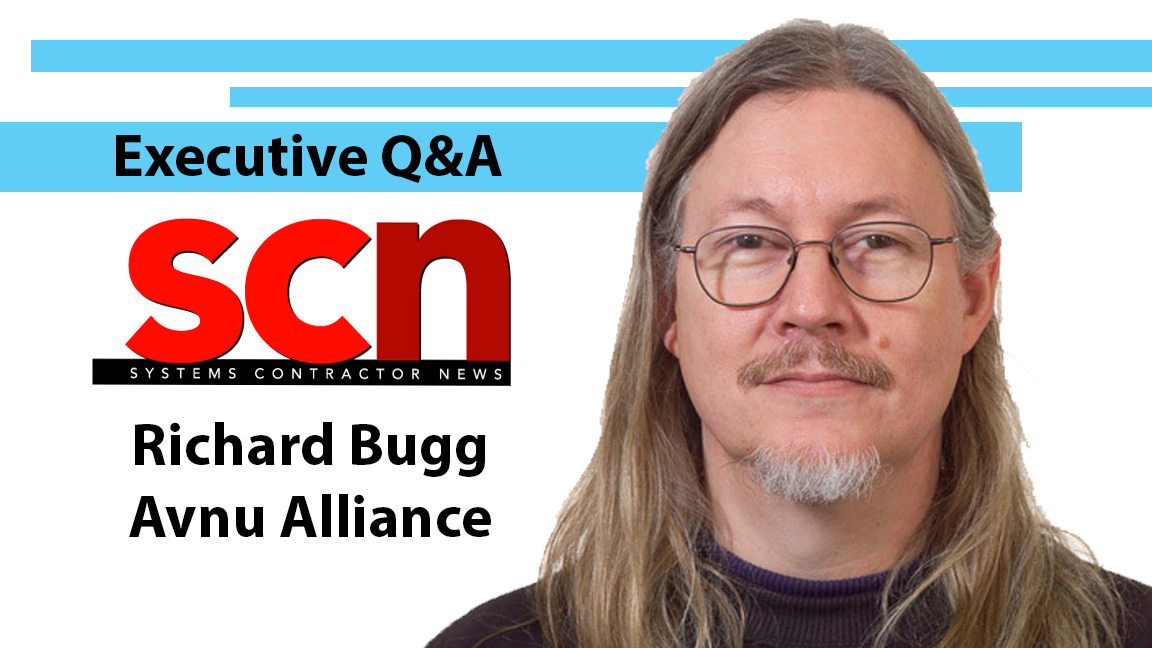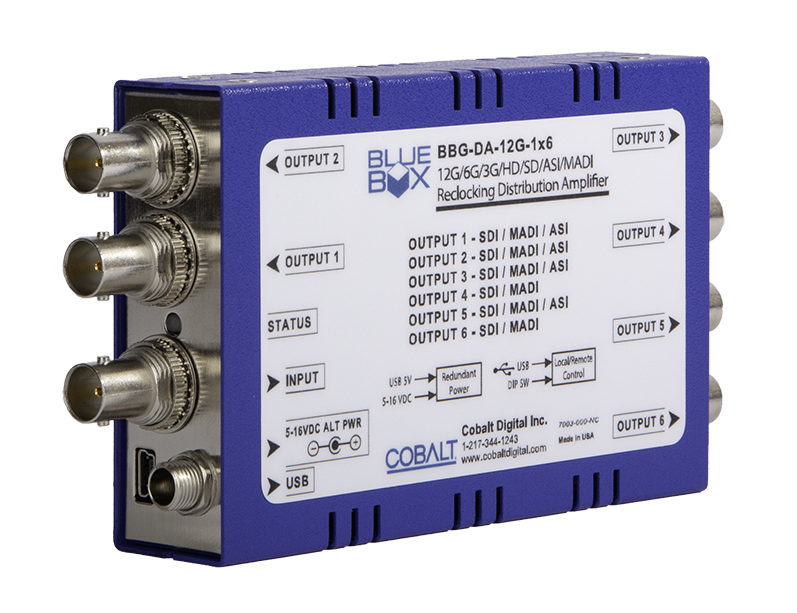Executive Q&A: Avnu Alliance Stresses Interoperability
Richard Bugg chairs the Pro AV Working Group and champions the new streamlined Milan certification process.

SCN: How long have you been with this group, and what are your responsibilities?
Richard Bugg: Since the 1970s I’ve been working in live sound on both sides of the microphone. Currently, I’m a digital products solutions architect at Meyer Sound Laboratories. For the past two decades, I’ve been managing digital audio show control, automation, and multichannel sound manipulation, “Spacemap,” in live theater. I became involved in Avnu early in the formation phase and have worked closely with the Pro AV segment within Avnu on market specifications, testing, and technical aspects. In more recent years, I’ve taken on the role of Pro AV segment chair within Avnu, and was actively involved in the launch of the Milan Protocol.
SCN: What is Milan and why is it important for the pro audio market?
RB: Milan is a standards-based deterministic network profile for professional media, based on the IEEE Audio Video Bridging (AVB)/Time Sensitive Networking (TSN) foundation. It was created by leading Pro AV manufacturers, including Meyer Sound, under the umbrella of Avnu Alliance. Our goal was to enable a streamlined specification and certification process. Milan-certified devices have guaranteed interoperability, assuring devices work together at new levels of convenience, reliability, and functionality.
[Executive Q&A: Choose Your AV Path]
When it comes to networked audio platforms, the professional industry has two major requirements. At the most basic level, it requires guaranteed delivery of high-quality audio (not subject to dropouts), and it requires low and deterministic latency (fixed and does not drift). The industry also needs to solve for these features with a long-term, stable, and viable platform. When making decisions on networking infrastructure, end users need to be confident that they’ve chosen an enduring standard and a network that will work as their media and data needs scale—today, tomorrow, and even years from now.

Many solutions today have been knit together using proprietary networking solutions, requiring extensive design, installation, and support work from industry professionals, and creating propositions that aren’t guaranteed for long-term viability. As the network has evolved and continues to scale, so has the opportunity for the industry.
There is no one perfect network standard for every application. Milan is not competing with other network standards—it’s a deliberate execution of the solution that live sound leaders have chosen as their network. Milan is an evolving, long-term, viable, and durable network.
A daily selection of the top stories for AV integrators, resellers and consultants. Sign up below.
As an independent association, the Avnu Alliance was created to provide a neutral authority to guarantee interoperability. The Milan certification is the first independent certification program in the Pro AV market. Standardized tests performed at independent test labs guarantee interoperability with other Milan-certified devices and create the no-compromise, open-standards-based network for real-time media delivery that is Milan.
At Meyer Sound, we recently released the PANTHER loudspeaker, the first Milan-certified line array loudspeaker. With this advancement, PANTHER extends Milan-based networked systems all the way to the loudspeaker cabinet, while the always-active parallel analog input assures backward compatibility with existing hardware.
SCN: Can you explain the unique Milan Advanced Certification Program?
RB: A first of its kind for the AV industry, the Milan Advanced Certification Program, introduced in October 2021, streamlines certification testing. End devices implementing the Milan network protocol can now be tested at several independent test houses around the world, enabling much faster, more convenient, and less expensive testing and certification. The Advanced Certification Program introduces a significantly enhanced Certification Management System, new pre-certification validation test tools, and global access to test houses.
Milan is not competing with other network standards—it’s a deliberate execution of the solution that live sound leaders have chosen as their network.
This is a new approach to open standard certification for the Pro AV industry. Milan manufacturers have come together to invest their expertise, resources, and experience to ensure a system architecture that will work for the future of many ecosystems, all supported by a first-of-its-kind independent certification program.
[SCN Hall of Fame 2022: Steve Ellison]
The new Milan Advanced Certification program makes testing and certification significantly easier and faster for members, which brings more manufacturers and certified devices to the table, with the guarantee that those devices will work together to deliver the best experience for the end user. The new streamlined program is Milan’s solution to enabling a long-term, stable, no-compromise network of future-ready devices that is easier and less expensive to implement—and evolves with the market’s requirements.
SCN: Beyond Milan, what are some other projects Avnu is pursuing?
RB: The toolbox of TSN protocols and capabilities defined under 802.1 standards offers an array of implementation options and is being used in applications across industrial, automotive, consumer/residential audio, and Pro AV media networking. Each of these markets will need a flexible selection of software and silicon to meet their particular use cases. Too much fragmentation, though, and TSN components will never achieve the economies of scale required for a sustainable ecosystem. For TSN to achieve large-scale adoption, TSN implementation must be as specific as needed for diverse applications while remaining as unified as possible at the silicon level.
[Avnu Alliance Releases Market Requirements Research for Wireless TSN]
The work currently being done at IEEE to define technical profiles for applications—802.1BA for professional AV, 802.1DG for automotive, and 60802 for industrial—tells us how TSN implementations will be differentiated, but it also reveals how much they have in common at the network level. Avnu’s Silicon Validation Task Group is working to define test plans for base silicon profile conformance and interoperability. This interoperability would allow silicon component manufacturers to offer products that can serve diverse market requirements, accelerating the development of a broad TSN ecosystem.
Avnu is also collaborating with other protocol organizations such as including CC-Link Partner Association (CLPA), ODVA, Inc. (ODVA), OPC Foundation (OPC), and PROFIBUS Nutzerorganisation e.V. (PNO) to develop a single test plan that could test for conformance with the IEEE/IEC 60802 profile for TSN for Industrial Automation. This would become a test plan that would be shared by all participating organizations and made available to the broader Industrial Automation ecosystem to help drive interoperability at the TSN level on shared networks. These organizations and Avnu all have significant roles in defining networks and communication protocols for the industrial automation ecosystem, and this collaboration marks a commitment to develop an ecosystem of devices from different manufacturers that all comply with IEEE’s 60802.
Avnu Alliance has also been actively exploring opportunities with Wireless TSN in the Wireless TSN (WTSN) Working Group. Wireless TSN has the potential to drive the next great networking evolution, making advanced applications easier to build, more useful, and more reliable. For example, in Pro AV, Wireless TSN could allow flexibility and mobility of instruments, wearable devices, speakers, and equipment, including controls for pyrotechnics, moving stage/set elements, lights, and more.
The WTSN Group has recently issued a new whitepaper addressing market expectations, capabilities, and certification procedures for wireless TSN applications. Created with input from TSN market leaders including Intel, L-Acoustics, Cisco, and Keysight, the new paper identifies the capabilities that wireless TSN-capable networks must implement, including features to enable time synchronization, bounded latency, reliability, security, and efficiency. It also offers estimated KPIs for these capabilities by vertical market, including industrial automation, professional audio and video, and AR/VR.
SCN: Where do you see the Pro AV industry heading?
RB: Commercial audio engineering has become more complex as more devices require the use of IT as core to their functionality, and user demand for cost efficient ways to move audio over the network is growing. But the future of AV requires more than just successfully connecting the growing mass of networked devices; rather, it will require sophisticated functionalities that can only come from deep system integrations. In other words, the future of AV will champion a whole that is greater than the sum of its parts, with the focus shifting to building an integrated system instead of wrangling isolated, individual products.
Audio and systems engineers require technologies that can empower them to deliver the most innovative experiences to users while still being simple to use. In the Pro AV market, these systems also require long-term stability so that end users can amortize the investment over a period of many years. It is also equally important that the system is easy to set up and use. This is the key benefit of networked media. End users must have a way to remotely operate, monitor, and configure the system without having to be an IT specialist.
[Executive Q&A: PPDS Offers Features and Functions]
To create this kind of solution and achieve the high-quality audio that can satisfy audiences now and into the future, open standards can support the convergence of multiple disciplines, such as audio, video, mechanical, control, and lighting on a single network. While the Pro AV market has various standards and protocols, it is possible to have a system where, with minor design adjustments, various protocols can coexist on the same network.
Ultimately, this convergence will result in broadly useful solutions and devices, enabling economies of scale and reducing the cost for essential infrastructure. Cross-industry convergence of this nature occurs in the wake of open standards adoption, backed by conformance verification mechanisms.
Currently, this effort is being championed by Avnu Alliance, where manufacturers who are in direct competition with one another have come together to drive the change they want to see the in the Pro AV market. This is Milan. Working together over the last several years, manufacturers (including Meyer Sound) have created a vision for a complete media network that is easy-to-use, future-proof, open for creativity, scalable, and capable of delivering a convergence between audio, video, and control with IT on one network.
SCN: What new initiatives are we likely to see from Avnu?
RB: In October 2021, Avnu Alliance announced expanded testing at new Registered Test Facilities (RTFs) around the world: Allion in Taipei City, Taiwan; Excelfore in Tokyo, Japan; and Granite River Labs in both Karlsruhe, Germany, and Santa Clara, CA. These well-recognized, globally dispersed test labs will lower shipping times, offer competitive pricing models, and streamline the process for members seeking to certify products and make communications between testing sites and vendors seamless.
[Editorial: Facebook Glitch Offers Lesson in Customer Service]
These additional test sites and locations give Avnu Alliance greater ability to scale testing capacity to meet demand, while also allowing device manufacturers to enter products into testing with less lead time prior to release. The testing program will always continue to evolve. Additional certification test plans are in development with both the Silicon Validation Task Group and Wireless TSN Working Group, and Avnu will make these available through these global facilities as the TSN ecosystem grows.
Those interested in having a vote and voice in developing the requirements needed to ensure the interoperability of TSN standards-based devices can visit www.avnu.org to learn more about membership in Avnu Alliance and get involved.

Mark J. Pescatore, Ph.D., has been the content director of Systems Contractor News since 2021. During his career, he's hosted and programmed two ongoing regional industry trade shows (including Future B2B's AV/IT Summit), produced and hosted podcasts and webinars focused on the professional video marketplace, taught more than a dozen college communication courses, co-authored the book Working with HDV, and co-edited two editions of The Guide to Digital Television.
